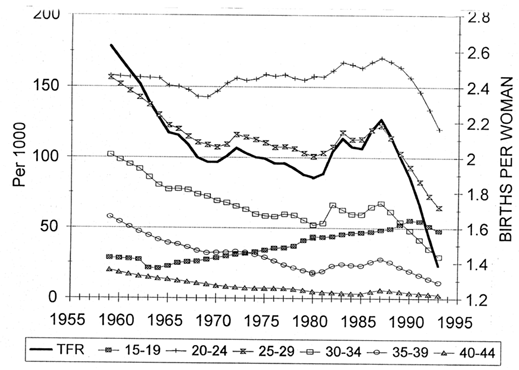dept | resources | glossary | credits | feedback | help | search |
|||||||||||||||||||||
 |
|||||||||||||||||||||

|
|||||||||||||||||||||
 |
|||||||||||||||||||||
| The Harriet and Robert Heilbrunn Department of Population and Family Health |
|||||||||||||||||||||
 |
|||||||||||||||||||||
intro | use demographic stats | rates & indices | measures of the total population | conclusion | exam |
|||||||||||||||||||||
What rates and indices can be used to summarize population dynamics?Identifying numerators and denominators - Before seeking data, you need to first decide for which population units or areas you will be preparing estimates, namely which villages, districts, cities, states, etc. will be included in your analyses. The total population for the designated area will serve as the basic denominator for your rates. Usually, you will need to more precisely define the denominator as the ‘population at risk’ for the specific event being studied. Basic denominators (population by age and sex) are found in the most recent census or the most recent set of national estimates prepared by the national statistics office. If that is not available, alternative sources include estimate series prepared by health ministry. Numerator data is obtained from the observation of the event at risk. These data are usually compiled by specific governmental agencies charged with observing this process, and there almost always will be potential biases or errors associated with each data source. In some instances, national or local survey data also may be used to estimate the numerators for rates. Unless otherwise specified, the numerators and denominators should correspond to the same geographic areas and the same time periods. Deciding what demographic data you need: Demographic data are summarized in measures expressed as rates, ratios, and proportions using population numerators (the specific characteristic or event of interest) and denominators (the total number of events or people from which the numerator was derived or to which the numerator is being compared). The following is a matrix that can help you decide which demographic data you need. The remainder of the module outlines how you would answer these questions: Where to get the data you need and how to calculate the requisite demographic measures.
Example of Age Specific Fertility Rates:continue to... Measures of the Total Population Structure and Size |
|||||||||||||||||||||
 |
|||||||||||||||||||||

